Cowan Park
Location: 4340 Coppin Road
This area is known as the Loch Lomond Watershed. A watershed is an area of catchment where rain fall and spring snow melt, collect. You can imagine a watershed like your bathtub. When we fill the tub to the very top and pull the drain all the water goes to one area – in this case the bottom of the Nor’wester Mountain Range.
Download PDFChippewa Park (Marsh)
Location: 2465 City Road
Welcome to the Marsh Buffet! All You Can Eat Mosquitos!! Insect life abounds in wet places like this. Insects have their own lives to live but they are also food for each other (bigger bugs eat smaller ones) and for the waterfowl and other birds that come to the buffet. Even bats may be seen catching a nighttime snack!
Download PDFMountainview and St. Patrick’s Cemeteries
Location: 1306 Broadway Ave
After finding the post, walk further south to see the river. You will see evidence that the river has moved, although it took many years. But change is good! The shallow water is warmer and now provides a different habitat for even more animals and birds to move into the neighbourhood!
Download PDFNeste Boat Launch
Location: Mountdale Avenue
This river was used to move logs down to the mill. The men that moved the logs were called log drivers. They had to stand on the logs, with spikey shoes, and push the logs downstream (towards Lake Superior) to be ready to be processed at the mill.
Download PDFThe Tree Farm (Pennock Creek North)
Location: 3112 25th Side Road
Scientists measure trees to learn about growth patterns in different weather and seasons.
Tree growth is measured by wrapping a measuring tape around a tree AND by taking core samples. A core sample is a non-invasive way to take
a piece of the tree from the middle so we can count the rings.
Mission Island Marsh Conservation Area
Location: 106th Street
Mission Island Marsh was once a landfill site. It has been reclaimed as greenspace and provides great viewing opportunities of both the Kaministiqua River and Lake Superior.
Mission Island Marsh is home to many migratory waterfowl. The tall grasses make great hide aways for nesting geese, ducks and gulls.
Download PDFVickers Park
Location: 1700 Arthur Street East
Trees do a great job of keeping the city cool. Notice how cool it is under the trees compared to how hot it was on the sidewalk before you entered the park. No wonder parks are so popular on sunny days! Animals benefit from this shade as well and spend sunny days hidden in the trunks, branches and leaves of these beautiful trees.
Download PDFKam River Park
Location: May Street South
This park is 500 metres long and makes up, 1% of the waterfront of Thunder Bay. Transporting of industrial goods used to cause a lot of pollution but we are improving. Green spaces like this help contribute to the rehabilitation of land. Rehabilitation means healing the land and restoring, or putting it back, the way we originally found it.
Download PDFInternational Friendship Gardens (Skating Pond)
Location: 102 Legion Track Drive
A pond is a small area of fresh water, and different from a river or stream because it does not have moving water. A pond also differs from a lake because it has a small area and less depth. This pond was formed naturally and is fed by rainwater. Some ponds are man-made.
Download PDFSoroptomist International Friendship Gardens
Location: 102 Legion Track Drive
A Riparian Zone is an area along a waterway that is flourishing with plant life. These important areas are used by waterfowl, small mammals, insects, and shore birds for nesting, habitat, feeding and hiding from predators. It’s like a game of hide and seek! The more riparian zones along waterways the more healthy that water ecosystem will be.
Download PDFNeebing River in Northwood
Location: 627 Thornloe Drive
What you throw down the storm drain or on the street ends up in the river, right in the food chain. The storm drain water is not treated; it goes directly into the lake. That means we had better think twice before throwing anything away. Humans are at the top of the food chain. The fish and animals we eat will eventually be inside us too!
Download PDFConservatory
Location: 1601 Dease Street
On a cold winter’s day, take a trip to the tropics! The conservatory is a warm and wonderful place when we get tired of ice and snow. You can listen to the sound of trickling water, smell the aroma of so many flowers and relax on a bench. The conservatory is showing us some of the diverse plants from all parts of the world. Celebrate diversity wherever you find it!
Download PDFNeebing-McIntyre Floodway
Location: Parkway Drive & Ford Street N
The Neebing River is home to an invasive species called the Sea Lamprey. They like to feed on sportfish like walleye and whitefish by using a suction cup like mouth to attach themselves to their prey. Sea Lamprey are challenging to manage because they hatch their young in the river and then move
Download PDFChapples Park
Location: Chapples Drive
Public parks are often a space for ornamental trees and shrubs so we can enjoy their beauty and shade.
These are not trees that we find in a forest, but still serve a purpose. They are food for urban wildlife such as squirrels, chipmunks, skunks and crows.
Download PDFIsland Drive Wetland
Location: 900 Island Drive
Wetlands are like a giant sponge. They soak up water and filter out pollution that may be harmful to the wildlife that call the wetland home. That’s why it is important for us to protect wetlands and keep them clean. We can do this by making sure we only put safe products down our, drains inside our homes, and only water down the storm drains along the streets.
Download PDFGarden of Hope
Location: 958 Balmoral Street
When we build cities, we often make the mistake of taking away important parts of nature. This garden is an example where we put nature back! This used to be a grassy area but is now a haven (a safe place) for birds, butterflies and pollinators. Pollinators are insects that visit flowers, get covered in pollen and then drop it off at the next flower they visit. This is an important step so the flower can produce seeds!
Download PDFThunder Bay Art Gallery
Location: 1080 Keewaitin Street
The forest floor is always an interesting place to find insects that play a major role in breaking down dead plant material. How many different insects can you find when you look under the dead leaves? If you visit in spring, this area may be very wet and the dead leaves will be further broken down by the spring flooding.
Download PDFCentral Natural Environmental Garden
Location: 872 Tenth Avenue
This area was an old roadbed that has been reclaimed as a community greenspace. Although the land is owned by the City of Thunder Bay, EcoSuperior Environmental Programs has worked with community partners to create this new habitat; a great space to have a picnic, see urban wildlife and learn about native species.
Download PDFLake Tamblyn (Near Canon)
Location: 955 Sanders Drive
These trees have been planted individually so we can see and learn what the tree looks like when it isn’t challenged. This is called an arboretum; a public space to learn how trees grow; and what makes them unique. A forest is a is a great place to see how trees grow together; in a community.
Download PDFLakehead University River Trail
Location: 955 Sanders Drive
Take a walk on the wild side! Leave behind the university with its many buildings and man-made lake. Here you can experience wild nature as people have experienced it for centuries. You can forget for a few minutes that you are in the city.
Download PDFGeorge Burke Park (Trails)
Location: 127 Montgomery Street
A native species is one that belongs in this ecosystem. They live in balance with other species and elements of this space. Both living and non-living beings interact together. When a non-native species is introduced to an ecosystem it can create an imbalance for all of the beings. Some non-native species even become invasive and can quickly dominate an ecosystem.
Download PDFGeorge Burke Park
Location: 127 Montgomery Street
Rust occurs when Iron, Oxygen, and moisture combine. When these three ingredients are combined, oxidation happens and produces a chemical reaction forming Iron Oxide or Ferric Oxide (a.k.a. Rust).
Download PDFPrince Arthur’s Landing
Location: Marina Park Drive
Lake Superior is the largest freshwater lake, by surface area, in the world! Although seemingly cold, Lake Superior is impacted by the changing climate patterns, otherwise known as climate change. A warming lake can impact the wildlife that use and live by the lake.
Activities that we do daily can impact Lake Superior’s climate.
Download PDFHillcrest Park
Location: 100 High Street South
Where you are standing right now used to be under water over 10,000 years ago. This water body was known as Glacial Lake Agassiz. As the glacier moved, it scraped the ground you are standing on, melted and left behind the waters of Lake Superior.
Download PDFMills Block Forest
Location: 605 Community Hall Road
Areas like this are so important to us! There is a lot of water held in this area and it is slowly released to the rivers so Thunder Bay does not get flooded. You can see some water but there is even more water held underneath the land by the roots of the plants and trees.
Download PDFWaverley Park
Location: 401 Red River Road
It’s lovely to be under the shade of these trees on a hot summer day! They do a great job of keeping Thunder Bay cool. Their deep roots also hold water to keep our city from flooding when there is heavy rain. This is the second oldest park in Ontario!
Download PDFMouth of Current River
Location: 24 Shipyards Road
This area has been a popular recreation spot for over 100 years! The location was made popular through both Lake Superior views and the Current River Falls. The area has had a long history of streetcar development, railway development and now protection of an important Lake Superior fishery.
Lorne Allard Fishermen’s Park was born in 2009 through a vision of Lorne and fellow Northern Steelhead Association members.
Download PDFBoulevard Lake (Main Beach)
Location: 400 Lyon Boulevard West
We created the lake for the use of people. It is an expansion of the Current River. We sacrificed habitat to do that. We mow right to the water for easy access for humans so there is no riparian zone in many places.
Now where do we encourage habitat for other species?
Download PDFMcVicar Creek
Location: 150 Hinton Street
This water is COLD! You might not like it to be so cold, but it is just perfect for the steelhead fish that come here every spring to spawn (lay their eggs). If you are lucky you may see them jumping up out of the water as they swim upstream. The steelhead babies (called fry) need clean water to live in so remember to keep litter out of the creek!
Download PDFAdelaide Butterfly Garden
Location: 420 Adelaide Street
Pollinators need you; you need pollinators. Pollinators are any animal that helps plants reproduce. They visit flowers to drink nectar or feed off pollen and transport pollen grains as they move from spot to spot. They are responsible for one of every three bites of your food!
Download PDFBoulevard Lake (Birch Point)
Location: 477 Cuyler Aveue
The area of natural plant growth on the edge of the lake is called a “riparian” zone. This helps to keep the water shaded, making it cooler – better for most insects and plants. If you have a riparian zone on your property, then you have fewer geese because it is too difficult for them to get in and out of the water.
Download PDFBoulevard Lake (Fossils)
Location: 600 Lyon Boulevard West
Fossils are impressions of the remains, or pieces of the remains, of an ancient (super old) organism, in a rock!
A fossil can preserve an entire organism or part of one, like a piece of bone, a shell, a feather or even a leaf.
A fossil can leave clues to the past and help us learn about species that were here many, many years ago.
Download PDFThe Bluffs Scenic Lookout
Location: 690 Arundel Street
12,000 years ago there was a glacier 2 – 4 kilometres thick right here! It was the Superior Lobe of the Laurentide Glacier which covered most of Canada at that time. Rocks underneath the glacier scratched the bedrock you are standing on and caused the lines or striations that you can see.
Download PDFCentennial Park
Location: 751 Centennial Park Street
This is George Creek, habitat for some of the smallest (water beetle) and some of the largest (deer) animals of the Boreal Forest. The creek is important spawning habitat for brook trout. The pebbles on the bottom of the creek are ideal places for brook trout to lay their eggs.
Download PDFVanderwees Nature Trail
Location: 6488 Mapleward Road
Man is not the only mammal that likes to change his environment for his own benefit. Beavers are also master engineers, like the ones who created this dam. They altered their world to make it better for themselves and their young ones, but it may have been to the detriment of other animals that lived there!
Download PDFTrowbridge Falls
Location: 125 Copenhagen Road
Nature will eventually reclaim this bedrock. Look for cracks where plants are starting to grow. Your great great great grandchildren will be the ones to see those changes! Nature can take a long time to break down rocks.
Download PDFTrowbridge Falls Park
Location: 125 Copenhagen Road
If you swim at Trowbridge, you will notice that sometimes you can walk out onto the bedrock and other times, there is too much water. The water level is higher in the spring because of the snow melting. But the level of the water can change at other times as well. A big storm will make a sudden rise in the water level and the bedrock may be underwater. When the summer days are dry, the water will recede.
Download PDFCascades Conservation Area
Location: 190 Balsam Street
The bedrock you are standing on is part of the Canadian Shield, a large piece of rock that covers a lot of our country! The Canadian shield stretches from eastern Canada, across the Great Lakes and into Northern Manitoba.
Some of these rocks have pools of water in and around them. These small pools of water are important habitat for insects and aquatic (water) bugs.
Download PDFAre you ready for an Adventure?
The Big Boreal Adventure is a free, nature-based scavenger hunt in Thunder Bay, designed to get people outside, exploring the city. A guidebook is available to launch the search for 38 special sites dotted throughout Thunder Bay’s natural spaces. Re-visit your favourite green spaces and discover new ones at your own pace. The Big Boreal Adventure is accessible for all ages.
Explore with our nature scavenger hunt
The guidebook offers information about each site, as well as a clue that gives hints to lead you to the post. There are blank pages in the guidebook so you can make a rubbing from the post into your book. The goal is to visit each site, find each post, and make a rubbing, using a pencil or crayon, from the post into your guidebook.
Looking for even more fun?
Now that you have reached our website, come back again and again to check out the new information, games and activities that you will find for many locations! Listen to the recording or read the information. Check out the recommended books from the Thunder Bay Public Library. Admire the photos of the locations and submit your own. Photos of you doing the activities will inspire others to go for a Big Boreal Adventure!

Get your guidebook
Pick up your guidebook at any Thunder Bay Public Library.



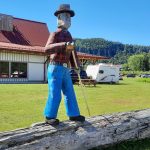
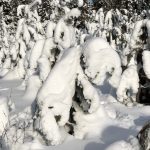





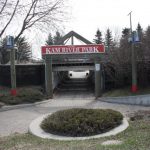






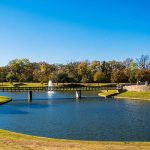
















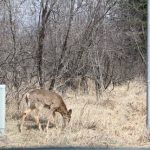















































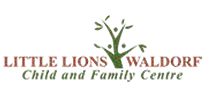










 807-344-2283 ext. 4
807-344-2283 ext. 4  ceo@littlelionswaldorf.ca
ceo@littlelionswaldorf.ca 